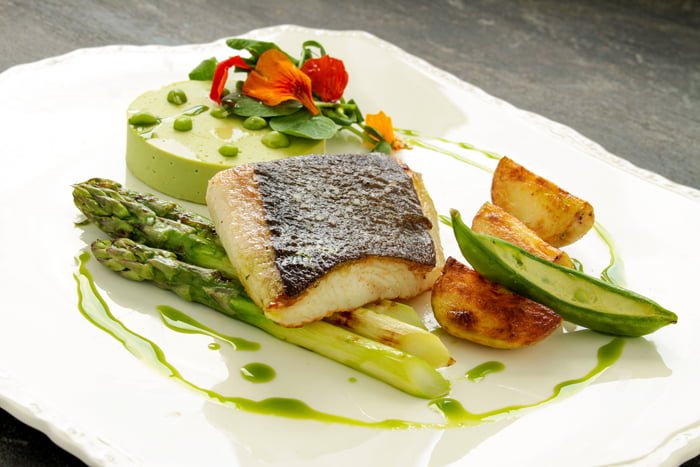Chefs should keep sea bass for specials menus, despite an improvement in its sustainability rating, says Direct Seafoods.
The new ‘Good Fish Guide’ from the Marine Conservation Society (MCS) gives line-caught sea bass from British waters a yellow rating, meaning it can be used with caution, upgrading it from a ‘don’t use’ red rating.
With the species popular on gastropub and restaurant menus, Direct Seafoods director of sustainability Laky Zervudachi is advising chefs to use the MCS guide and its ratings to plan a varied and regularly changing seafood offer, rather than rely on a few species.
He said: “It’s great that line-caught sea bass has recovered, showing what we can achieve as an industry when all of us – the fishing fleet, suppliers, chefs and retailers – work together.
“However, it would be a concern if sea bass simply went back on menus as a core, year-round dish, or if chefs were less careful about how the sea bass they buy is sourced – not all sea bass on the market is sustainably line-caught.
“We also have to bear in mind that quotas which strictly limit the amount that can be landed still apply, and that with conservation an important consideration, strict catch limits are liable to remain in place, meaning sea bass will continue to be a high value menu choice.
“We’re encouraging our customers to recognise the diversity of the fish and seafood available with menu descriptions such as ‘catch of the day’ and ‘market fish’. Sea bass can easily be rotated on special boards with other popular species such as plaice, sole and sea bream.”
The new Good Fish Guide from the MCS has changed the ratings for a number of species, including a new red rating for North Sea cod. Zervudachi adds: ”The Good Fish Guide should be seen as an opportunity by chefs rather than a restriction. We have stocks available from other fisheries as an alternative to North Sea cod, and equally there are other high quality white fish species such as coley and hake available.
“There is also good news in the new ratings, for example on mackerel. There were concerns that it might have to be downgraded, but stocks from Britsh waters are still well-managed, and can be used as part of a varied seafood menu. In addition, some monkfish fisheries have moved into the green zone, and john dory is off the fish to avoid list By working together, we can ensure that we continue to have a wide range of high quality, sustainably-caught fish available.”
Direct Seafoods is a national fish supplier, made up of 1 regional fishmongers, and part of the Bidfresh group. It sources from all major UK fishing ports, as well as globally, and supplies 12,000 chefs and businesses on a regular basis.
Customers receive regularly updated sustainability information online, via the monthly ‘Catch-up’ newsletter and social media, and through advice and support from the sales team. Specialists in each location can prepare fish to order, to customer specifications, maximising value and minimising waste. Direct Seafoods leads the way in seafood sustainability in the foodservice sector, offering more than 130 Marine Stewardship Council certified products. www.directseafoods.co.uk
